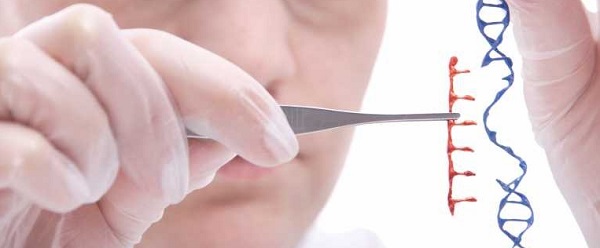Manipulating Malaria
Main Article Content
Abstract
According to the World Health Organization (WHO) about 3.4 billion people are at risk for malaria. In 2012 there were an estimated of 627,000 deaths due to malaria worldwide.[1]
While humans have been battling malaria for ages, the disease persists in many areas of the world.
People living in the poorest regions of the world will generally be most vulnerable. In 2012, 90 percent of all deaths related to malaria occurred in Africa, mostly killing children age 5 years or younger.[2]
Recently, scientists and technology firms have investigated novel methods to eliminate this deadly epidemic in the form of genetic modification, and a new paper published in Science calls for the need to fight malaria by genetically engineering the carriers for the virus, the mosquitos.[3]
One new technique proposed by researchers utilizes short repetitions in base sequences known as CRISPR (clustered regularly interspaced short palindromic repeats). CRISPR has been used for gene editing by inserting a plasmid containing genes and defined repeats, allowing an organism’s genome to be cut at any desired location.[4]
Scientists have considered utilizing CRISPR to insert specialized genes into the target mosquitos which would include a gene which is resistant to malaria parasites. Once these mosquitos are released into the wild the hope is that the DNA would be passed down to the offspring. The CRISPR molecules would then target a gene which would be replaced with the alternative malaria-resistant gene. Eventually, newly-born mosquitos would carry both copies of the resistant genes and this would then spread in the wild.
Academic researchers are not the only groups proposing the use of genetic modification to end the spread of such diseases, companies are experimenting with this as well.
Oxitec, an Oxford-based biotech company has developed its own method of ending malaria, beginning with breeding mosquitos in factories based in Brazil. The Oxford-based company breeds “sterile” male mosquitos and subsequently release the males into the wild. Once in the wild, males will mate with females and the offspring will inherit the gene. The resulting offspring will die before reaching adulthood and Oxitec hopes that this will cause the target population to wane.
Additionally, for those worried about the inability to distinguish between genetically modified mosquitos and wild-type mosquitos, Oxitec adds a forensic marker to make it easy for researchers to track the spread of mosquito-borne disease and how far the insects may travel.
For now Oxitec has chosen to focus on the dengue virus as it is only carried by one type of mosquito species, whereas malaria can be carried by many different types. Dengue infects around 50 million people per year and the task of decreasing the amount of affected mosquito carriers is notable in itself.
However, introduction of genetically modified organisms into the wild could lead to unforeseen side effects. When attacking an invasive species it is possible for a species to return to its original habitat where it may be important for the health of the ecosystem. While initial research seems promising, the bottom line is that no scientist will accurately be able to predict how breeding sterile mosquitos will affect larger ecological factors such as biodiversity.
Potential harm is one of the first things any scientist should assess before conducting any experiment. If the impact of genetic modification on mosquitos in an environment is unknown, it is then difficult to assess risk and subsequently implement proper regulations.
There are also dangers when attempting to control the proliferation of genetically modified organisms. It may be prove difficult to contain genetically altered organisms in one specific area and may have unintended effects in neighboring ecosystems. Moreover, if such mosquitos mated with related species’, the altered genes could be passed on to additional species, possibly causing undue harm to that species and the species’ environment.
Factories are already producing millions of mosquitos in Brazil and are able to send them across the country. Additionally, scientists are continuing to use CRISPR not only for mosquitos, but also for therapeutics and agriculture. This technology is very real and current laws do not require companies to submit such products for approval by the US FDA. Conversations amongst both researcher and policy-makers should begin immediately regarding the potential dangers of genetic modification of whole species.
Humans tend to be anthropocentric; at times, dangerously so. While the concept of eradicating malaria and other similar diseases is appealing, we must also consider the dangers these modifications will have to our world as a whole. When considering the impact of modifying a genetic code, we must also consider the impact this will have on our global environment.
REFERENCES
[1] WHO, 10 Facts on Malaria, Who.int,. (2014). WHO, 10 facts on malaria. Retrieved 30 July 2014, from http://www.who.int/features/factfiles/malaria/en/
[2] WHO, 10 Facts on Malaria, Who.int,. (2014). WHO, 10 facts on malaria. Retrieved 30 July 2014, from http://www.who.int/features/factfiles/malaria/en/
[3] Oye, K. A., Esvelt, K., Appleton, E., Catteruccia, F., Church, G., Kuiken, T., ... & Collins, J. P. (2014). Regulating gene drives. Science, 1254287.
[4] Marraffini, L. A.; Sontheimer, E. J. (2010). CRISPR interference: RNA-directed adaptive immunity in bacteria and archaea. Nature Reviews Genetics 11 (3): 181–190. doi:10.1038/nrg2749
Article Details

This work is licensed under a Creative Commons Attribution 4.0 International License.

